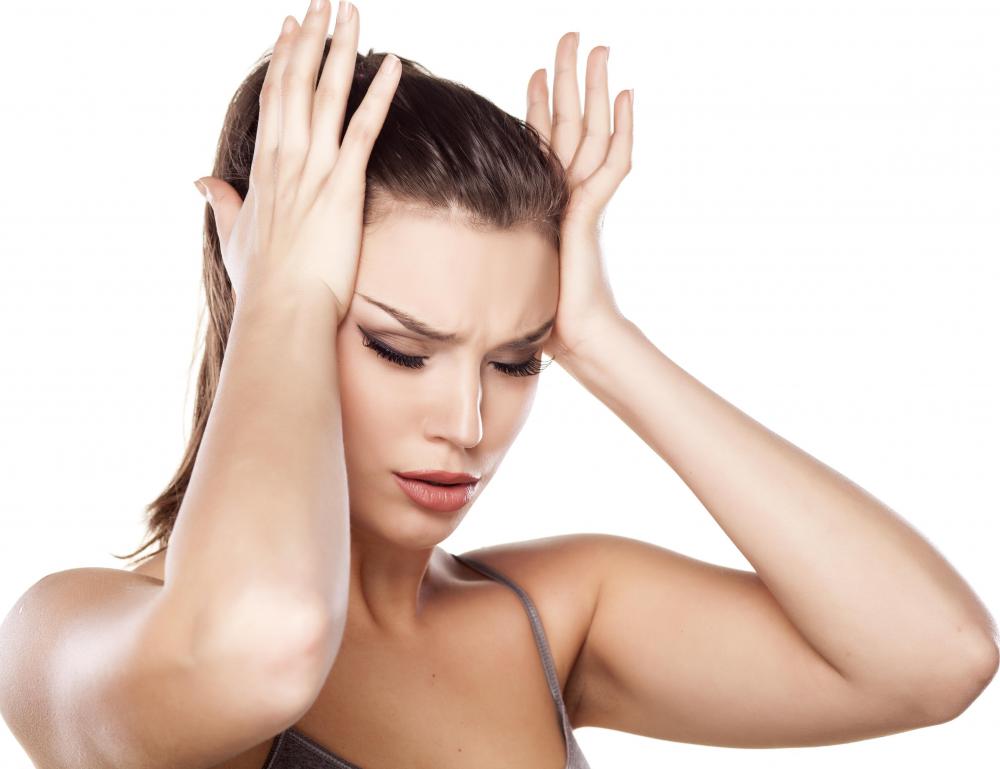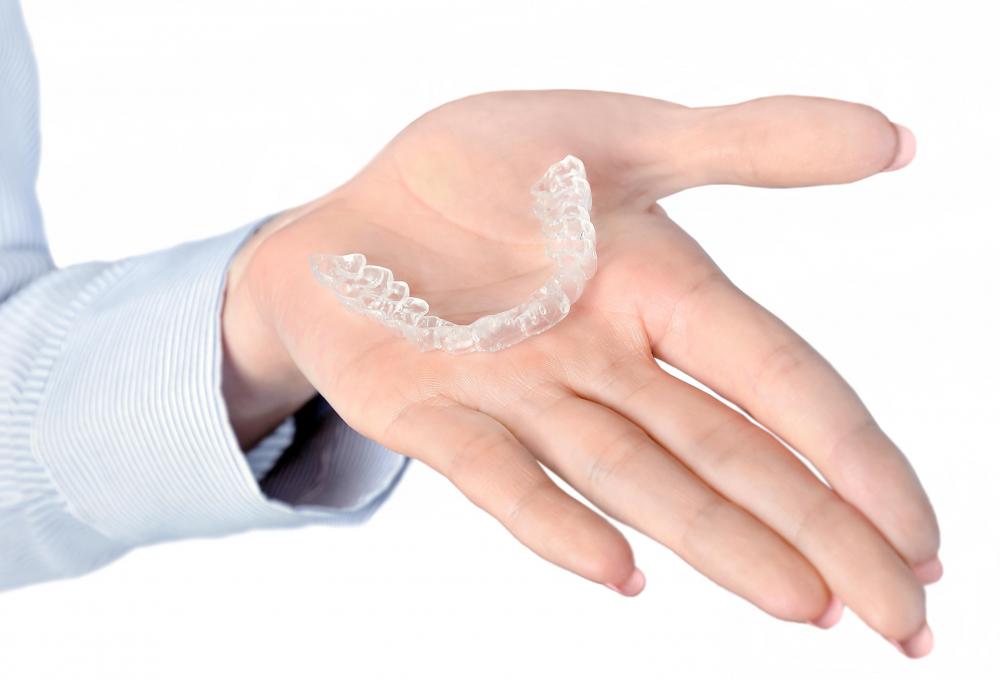At WiseGEEK, we're committed to delivering accurate, trustworthy information. Our expert-authored content is rigorously fact-checked and sourced from credible authorities. Discover how we uphold the highest standards in providing you with reliable knowledge.
What Is a Unilateral Headache?
The word "unilateral" means "one sided" and a unilateral headache occurs on one side of the head. Usually, it is in the temple area near the eye. Many conditions may cause unilateral headaches, including migraines, temporal arteritis, temporomandibular joint disorder (TMJ), and other problems. A person should seek medical attention if the pain is in the same place each time and especially if the headaches increase in frequency. Generally, neurologists treat unilateral headaches with medication, though some doctors prefer to include a controlled diet and stress reduction program in conjunction with the medication.
Approximately one in five migraine sufferers experience unilateral headaches. Another common cause of these headaches can be TMJ disorder which may be related to a misaligned jaw or clenching one's teeth. Often a dentist or an orthodontist can fit a person with a mouth guard or other dental appliance to relieve the pressure on the jaw. An additional cause may be temporal arteritis, which is an uncommon, but serious, condition that may accompany a unilateral headache.

Temporal arteritis usually causes a headache in the temple area near the eye. The temporal arteries in this area may be affected with chronic inflammation that creates pressure and pain. A reduction in the supply of oxygenated blood to the head and brain is another problem created by the inflamed arteries. Sometimes physicians refer to this condition as "giant cell arteritis" or "cranial arteritis." Some neurologists believe this may be associated with autoimmune diseases.

When a person experiences unilateral headaches, he or she should consult a neurologist to rule out a serious underlying structural problem. Generally, medication lessens or relieves the pain of a unilateral headache. In some people, allergens, such as food, pollen, pet dander, and other substances, may trigger a unilateral headache. Medication and life style changes often help eliminate or lessen the headaches. Many people can trace the headaches to foods, including but not limited to monosodium glutamate (MSG), caffeine, nitrates, and nitrites.

Underlying health problems that can trigger a unilateral headache include pituitary gland or pituitary disorders, hormonal imbalances, and hypothalamus disorders. General practice physicians and neurologists often look for other symptoms. Usually these other symptoms present themselves in the eye on the side affected by the headache. This may include a watery eye, a red eye, or a drooping eyelid. Some people find that emotional stress, bright lights and fluorescent lights, and hormonal changes of menopause trigger episodes of unilateral headaches.
AS FEATURED ON:
AS FEATURED ON:

















Discussion Comments
Sounds like some sort of migraine and/or cluster headache.
My sister just called me me and asked me look up what might be the causes of seeing black spots and shortly after her temples pound for five minutes. It feels like her temples are on an alarm clock set to ring every ten minutes and shortly after, her eyes hurt. What could be the cause?
Post your comments